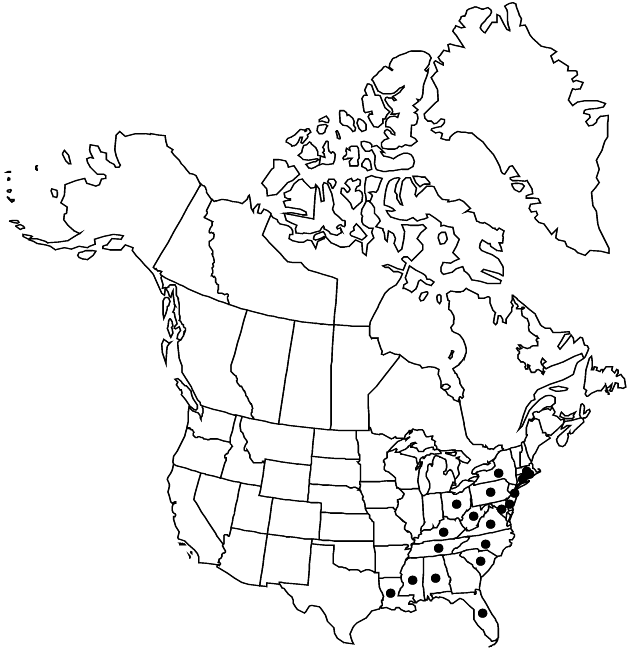Ageratina aromatica
Hist. Nat. Vég. 10: 286. 1841.
Perennials, 30–80(–100) cm. Stems erect, villous-puberulent. Leaves opposite; petioles 1–8(–12) mm; blades narrowly to broadly deltate to nearly ovate or lanceolate, 2–7(–9) × 1.5–4 cm, (usually subcoriaceous) bases rounded or truncate to barely cuneate or subcordate, margins usually crenate, sometimes crenate-serrate to dentate or subentire, apices acute to obtuse, faces minutely pilose. Heads clustered. Peduncles 2–9 mm, densely and closely puberulent. Involucres 3.5–5 mm. Phyllaries: apices acute, abaxial faces puberulent to villous-puberulent. Corollas white, lobes sparsely villous. Cypselae usually glabrous or sparsely puberulent (near apices), rarely hirtellous on angles. 2n = 34.
Phenology: Flowering late Aug–Oct(–Nov).
Habitat: Sandy soils, burned pinelands, turkey oak sand ridges, pine-oak and oak-hickory upland woods, old fields, roadsides, fencerows, moist sites
Elevation: 100–900 m
Distribution

Ala., Conn., Del., Fla., Ky., La., Md., Mass., Miss., N.J., N.Y., N.C., Ohio, Pa., R.I., S.C., Tenn., Va., W.Va.
Discussion
Intergrades (probable hybrids) between Ageratina aromatica and A. altissima were identified by A. F. Clewell and J. W. Wooten (1971) over a broad area of their sympatry. They also found intergrades between A. aromatica and A. jucunda where their ranges meet.
Selected References
None.